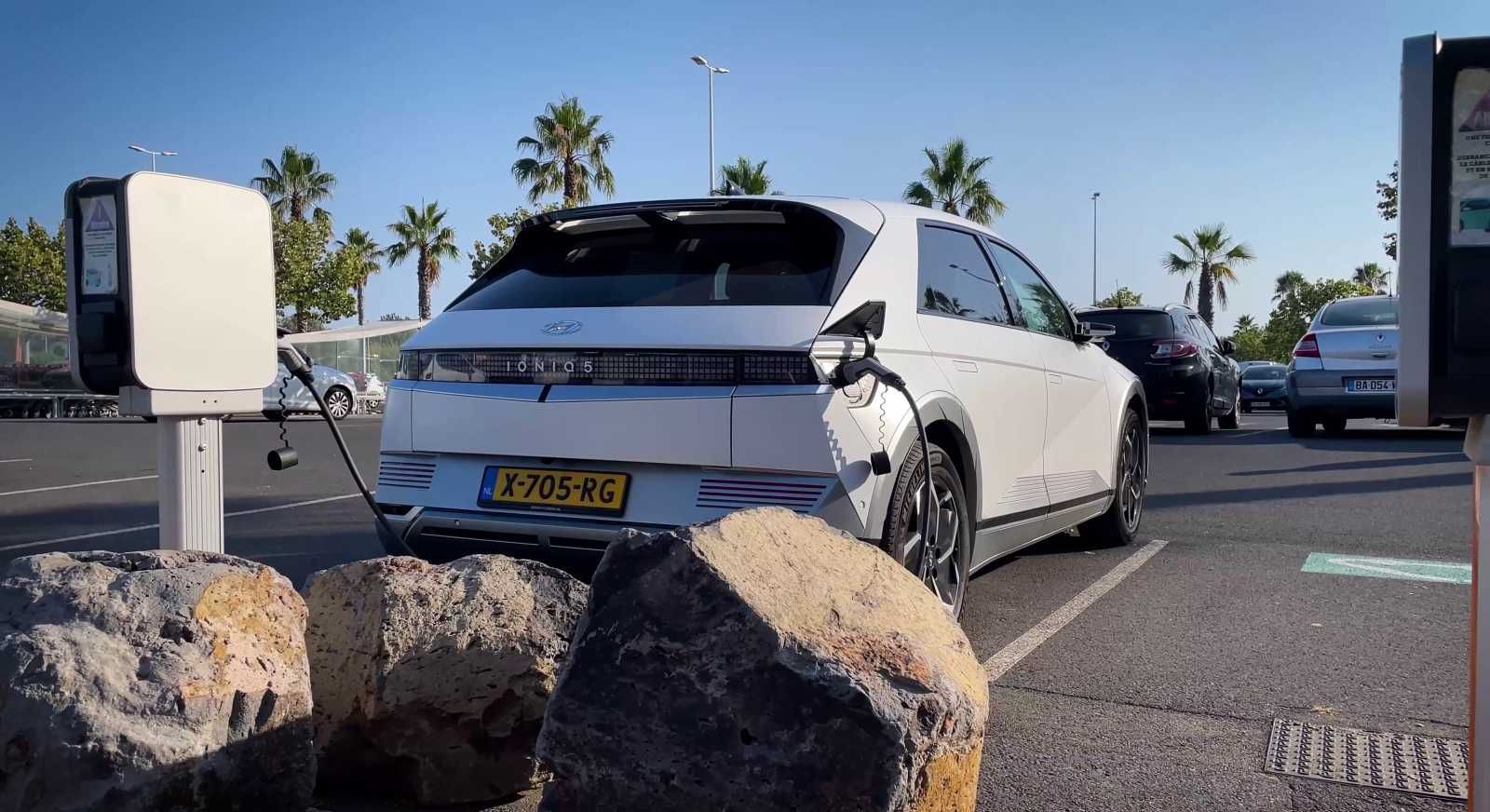How do you charge an electric car on vacation?
The EV-friendly countries in Europe
In Europe, charging options vary widely by country. Countries like Norway, the Netherlands and Germany are the most EV-friendly, with excellent charging infrastructure and competitive rates. And taking an electric car to, say, the south of France is really no problem. In southern European countries – such as Italy and Spain – the supply of charging stations is fairly limited.
Where do you find charging stations?
Charging points to charge your electric car can now be found all over Europe: along highways, in cities and even at campsites. Navigation systems in modern electric cars often offer features to find charging points, such as Tesla’s built-in route planning and Volkswagen’s I.D. models. These instantly show the nearest charging points. Many navigation systems even automatically schedule charging stops based on your destination and battery charge status. Don’t forget that there are also all kinds of handy apps, such as Chargemap, Plugsurfing, Shell Recharge and ANWB Onderweg. With these, you can find real-time charging stations and check their availability, charging capacity and rates. Good tip: don’t overestimate your range, keep your limit at 80% of maximum.
Handy: reserving a charge point
Be aware of problems along the way, due to blocked or faulty charging stations, limited availability or long queues. It is therefore smart to include alternative charging locations in your route planning. For a complete list of charging stations, you can also check the websites of providers such as Fastned, Allego and IONITY. Some providers even allow you to reserve a charging station in advance, which is especially convenient during busy vacation periods.
What you need to charge: charging passes
Proper preparation for your vacation trip starts with the right charging card. No doubt you already have a charging card, but before you leave, check that it offers sufficient coverage abroad and that it works at the charging stations of the providers in the countries you are visiting. In Europe, charge cards from providers such as Shell Recharge (formerly NewMotion), Plugsurfing and Maingau are popular. Many charging passes work at the charging stations of multiple providers, but in many countries it is helpful if you also have a local charging pass. It is wise anyway to bring an extra charging card from an international provider; the ANWB charging card offers coverage almost everywhere in Europe.
What you need to charge: charging cable
Your own charging cable is also essential to have with you. After all, at public charging stations, you use your own type 2 charging cable; at fast-charging stations, charging cables with sufficient capacity are built in. Additional subscriptions are usually not necessary, unless you use specific networks like IONITY, where a subscription can provide lower rates.
Pay: charge card, app or cash?
At almost all public charging stations in Europe you pay with your charging card or via an app. After charging, the amount is automatically debited from your account or, for example, once a month via your account. Cash payment is practically no longer possible. However, you do increasingly have the option of paying by scanning a QR code with your credit card, debit card or even PayPal, such as at Shell Recharge and IONITY fast chargers. This makes charging at these providers more accessible to occasional users and tourists.
SEE ALSO: Summer vacations 2024: there are plenty of charging stations in these vacation countries
Fast charging or regular charging: what’s the difference?
Fast chargers offer high charging capacities, sometimes up to 350 kW, and charge your car’s battery to 80% capacity in 20 to 30 minutes. Ideal along highways because then you can quickly continue your journey. Fast chargers do have higher charging rates and the actual charging speed decreases as your battery fills up.
So preferably choose normal charging if you do stay somewhere longer, for an overnight stay or an activity of several hours. Regular charging stations offer power from 11 to 22 kW. Charging takes longer, but is cheaper and more beneficial for the life of your battery. Such chargers are found mostly in cities, at parking garages and in shopping mall parking lots. More and more hotels and campsites also offer charging facilities – regular charging stations, ideal for charging your car overnight. When booking, check if your accommodation has a charging station and if there is an additional charge. Then you can quietly charge your own and your car’s battery to 100% at the same time.
How much does charging in Europe cost?
Charging costs vary greatly by country and provider. In the Netherlands, you pay an average of 0.30 to 0.45 euros per kWh at regular charging stations, while fast charging can cost as little as 0.80 euros per kWh.
In many countries – including Germany and France – rates are often higher, while Norway is known for its very affordable electricity. Each provider may have its own power rates and even a rate for the time you keep the charging station occupied.
By the way, the rates of IONITY, for example, are the same throughout Europe, but if you do not have a subscription with IONITY, you will pay considerably more there. Other providers, such as Fastned, offer discounts for regular customers with a subscription. So it makes sense to consider a subscription.
Some countries, especially Norway, have a very well-developed charging infrastructure with competitive rates. But in southern Europe, for example Spain or Italy, the supply of charging stations and charging points is limited and charging rates often vary quite a bit. In addition, in tourist areas in Europe you can also find charging stations where you do not pay per kWh, but per hour or per minute that you are at the charger. In that case, the costs can add up considerably.
Good preparation
With proper preparation, driving electric on vacation in Europe is as easy as it is at home. Make sure you plan ahead, use smart navigation and charging apps to always find a charging point nearby, and choose a charging card that is widely accepted in your vacation countries.

